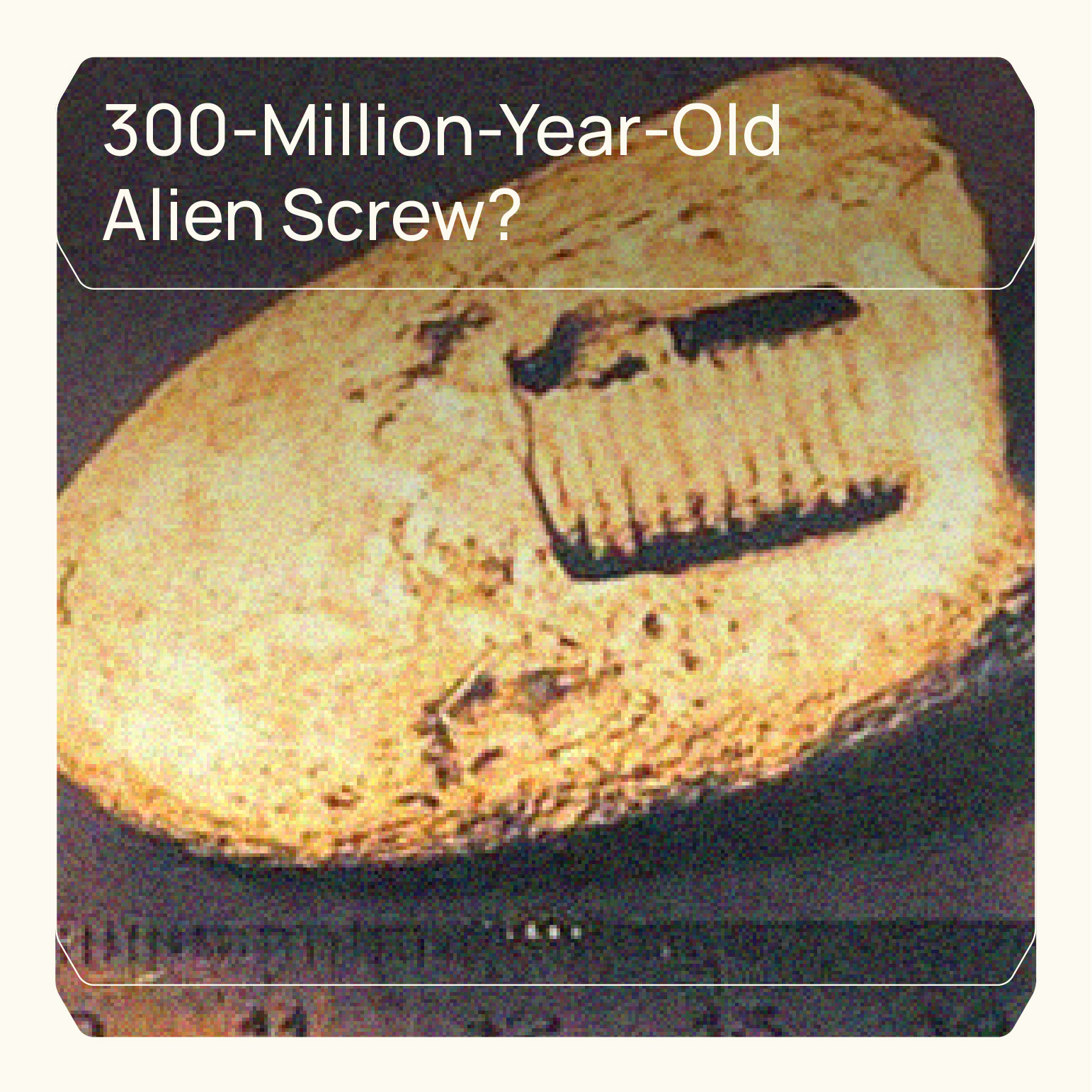
300-Million-Year-Old Alien Screw?
Tsamouris, the Fastener Specialists©
A mysterious object resembling a screw embedded in a rock has sparked intense speculation since its discovery in the 1990s in Russia's Kaluga region. While some believe the "screw" could be evidence of advanced ancient civilizations or even alien technology, experts suggest a more down-to-earth explanation. The "screw," measuring approximately an inch long (2,54 centimeters), was found by a UFO and paranormal research team called the Kosmopoisk Group. They claim the stone is between 300 and 320 million years old and contains another hidden "screw" inside, as revealed by X-rays.
However, without detailed information or the opportunity for conventional scientists to examine the object firsthand, speculation has been based on grainy online photos. The leading hypothesis is that the "screw" is actually the fossilized remains of an ancient sea creature called a crinoid, with the rock forming around the gradually dissolving creature, creating a screw-like impression.
Crinoids, now largely extinct, were abundant millions of years ago, and their fossils often resemble screws. Some argue that the size and markings of the "screw" don't match typical crinoid stalks, leading to more farfetched theories involving ancient advanced technology or alien visitors.
A mysterious object resembling a screw embedded in a rock has sparked intense speculation since its discovery in the 1990s in Russia's Kaluga region. While some believe the "screw" could be evidence of advanced ancient civilizations or even alien technology, experts suggest a more down-to-earth explanation. The "screw," measuring approximately an inch long (2,54 centimeters), was found by a UFO and paranormal research team called the Kosmopoisk Group. They claim the stone is between 300 and 320 million years old and contains another hidden "screw" inside, as revealed by X-rays.
However, without detailed information or the opportunity for conventional scientists to examine the object firsthand, speculation has been based on grainy online photos. The leading hypothesis is that the "screw" is actually the fossilized remains of an ancient sea creature called a crinoid, with the rock forming around the gradually dissolving creature, creating a screw-like impression.
Crinoids, now largely extinct, were abundant millions of years ago, and their fossils often resemble screws. Some argue that the size and markings of the "screw" don't match typical crinoid stalks, leading to more farfetched theories involving ancient advanced technology or alien visitors.
300-Million-Year-Old Alien Screw?

Tsamouris, the Fastener Specialists©
A mysterious object resembling a screw embedded in a rock has sparked intense speculation since its discovery in the 1990s in Russia's Kaluga region. While some believe the "screw" could be evidence of advanced ancient civilizations or even alien technology, experts suggest a more down-to-earth explanation. The "screw," measuring approximately an inch long (2,54 centimeters), was found by a UFO and paranormal research team called the Kosmopoisk Group. They claim the stone is between 300 and 320 million years old and contains another hidden "screw" inside, as revealed by X-rays.
However, without detailed information or the opportunity for conventional scientists to examine the object firsthand, speculation has been based on grainy online photos. The leading hypothesis is that the "screw" is actually the fossilized remains of an ancient sea creature called a crinoid, with the rock forming around the gradually dissolving creature, creating a screw-like impression.
Crinoids, now largely extinct, were abundant millions of years ago, and their fossils often resemble screws. Some argue that the size and markings of the "screw" don't match typical crinoid stalks, leading to more farfetched theories involving ancient advanced technology or alien visitors.
A mysterious object resembling a screw embedded in a rock has sparked intense speculation since its discovery in the 1990s in Russia's Kaluga region. While some believe the "screw" could be evidence of advanced ancient civilizations or even alien technology, experts suggest a more down-to-earth explanation. The "screw," measuring approximately an inch long (2,54 centimeters), was found by a UFO and paranormal research team called the Kosmopoisk Group. They claim the stone is between 300 and 320 million years old and contains another hidden "screw" inside, as revealed by X-rays.
However, without detailed information or the opportunity for conventional scientists to examine the object firsthand, speculation has been based on grainy online photos. The leading hypothesis is that the "screw" is actually the fossilized remains of an ancient sea creature called a crinoid, with the rock forming around the gradually dissolving creature, creating a screw-like impression.
Crinoids, now largely extinct, were abundant millions of years ago, and their fossils often resemble screws. Some argue that the size and markings of the "screw" don't match typical crinoid stalks, leading to more farfetched theories involving ancient advanced technology or alien visitors.
Latest News